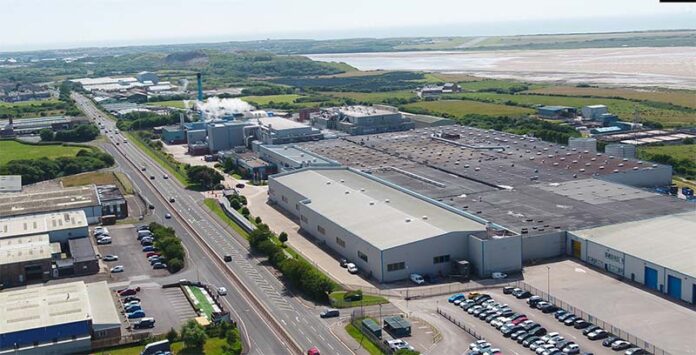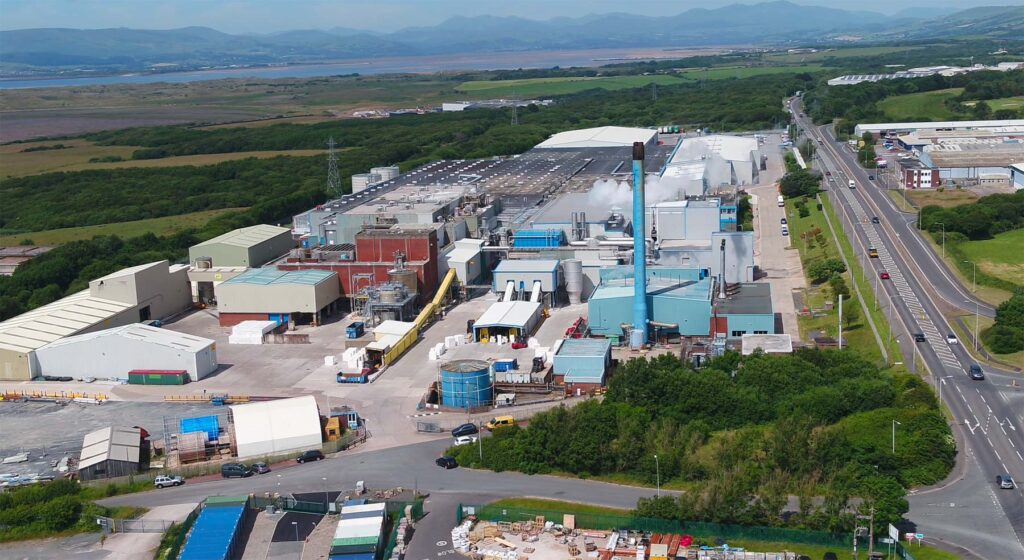
2025 start-up will reduce reliance on natural gas across UK manufacturing by up to 30%. Oriol Margó, Sustainability Transformation Leader, Kimberly-Clark EMEA, said K-C is targeting 100% renewable energy across the UK and Ireland by 2030. Report by Senior Editor Helen Morris.

In September, tissue giant Kimberly-Clark (K-C) announced it was launching a breakthrough £40m green hydrogen project at its Barrow-in-Furness plant in Cumbria, UK. The company has signed an agreement with Carlton Power, an independent energy development company based in Stokesley, North Yorkshire, to supply hydrogen to the site in a bid to reduce its reliance on natural gas as part of its global decarbonisation strategy. Expected to be up and running in 2025, the Barrow Green Hydrogen scheme is the first green hydrogen scheme worldwide for the business.
It will initially feature a 35 megawatt (MW) electrolyser which is expected to produce around 3,500 tonnes of hydrogen every year, and K-C has said the project will reduce 25,000 tonnes of greenhouse gas emissions annually – equivalent to taking 580 trucks off UK roads every year.
Oriol Margó, Sustainability Transformation Leader, K-C EMEA, says the plant is “a vital” initiative for K-C as a business: “We are making progress on our ambition to use 100% renewable energy in our UK and Ireland sites by 2030,” he says. “Our partnership with Carlton Power has the potential to reduce our reliance on natural gas by up to 30% across our UK manufacturing facilities.We understand that our scale and the power of our brands can help influence change if we can lead the way on decarbonisation projects. The nature of our industry is quite energy-intensive, and we want to help our peers.”
He adds that K-C has worked closely with the hydrogen industry to understand the roadblocks to commercialisation. “We are an energy intensive industry and can provide volume security if this helps to get projects off the ground.”
According to Margó, the projects completed or under construction are expected to deliver a 76% reduction of K-C’s scope 1 and 2 emissions in the UK by 2023, versus a baseline of 2015. “We need to deliver gas decarbonisation to achieve 100% decarbonisation, and hydrogen forms an important part of our strategy to achieve that,” he says.
“We understand the importance for us to lead in the development and deployment of effective decarbonisation strategies because as an industry we consume a lot of energy. This project is an exciting opportunity and demonstrates how cooperation among a wide set of stakeholders from business and government is critical to making green hydrogen commercially viable.”
He says that as this is the first green hydrogen scheme worldwide for K-C, it will also be a tool for the business to see how the project works in Barrow first, but adds that “there’s definitely potential for it to be used elsewhere if the market and regulation allow it. Our site in Barrow is a good test-case to see how feasible it would be to roll out across our other locations.”
The hydrogen that this scheme will use will be locally produced by an electrolyser powered by renewable sources – primarily wind and solar power, which then splits water into hydrogen and oxygen. “The hydrogen is burned to produce the heat required to dry our tissue products, with steam as the only by-product. By 2030, we want to be using 100% renewable energy across the UK and Ireland.”
K-C’s global decarbonisation goal is to halve its scope 1 and 2 emissions by 2030, and in the UK it wants to be using only renewable energy at its sites by the same date. “We’re making some great progress. In 2021 we signed a Power Purchase Agreement (PPA) with Octopus Energy here in the UK, which will lead to the construction of a new wind farm in South Lanarkshire. It was the first such agreement that we’d made outside of North America and will cover around 80% of our electricity needs for our facilities in Barrow, Flint and Northfleet. We are currently also working on additional exciting large-scale projects – so watch this space!”
Is this the future for the production of tissue paper? “All companies are different – some consume more electricity, while others consume more gas,” he says. “Regardless, costs are going up for all businesses and introducing renewable onsite sources – connected through private wire or private piping like hydrogen and onsite solar – is not only a great contributor to our decarbonisation strategy, but also a good way of building resilience in terms of security of supply.

“Ultimately, companies should focus on energy efficiency and reducing their energy footprint as much as possible in order to maintain and improve performance, as well as affordability. Using less energy will mean that a company’s energy transition will require a lower investment cost, and facilitate decarbonisation goals. However, the investment in decarbonising gas and electricity is intensive, so partnerships are essential.”
The wind farm that is being built by Octopus Energy is due to be completed imminently, and he adds that the business will be making further announcements on that. “Combined with the green hydrogen scheme, we’ve got two substantial initiatives underway that we want to focus on.
“We’re always on the lookout for initiatives that can support our aims of delivering 100% renewable energy in our internal operations in the UK by 2030. Being collaborative is crucial to
this – cooperation between a wide set of stakeholders from business and government is the only way that these projects will be viable.”
































